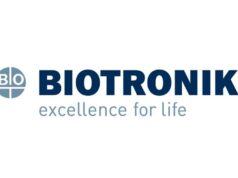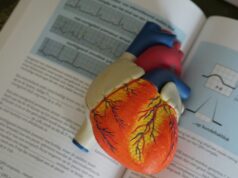 Robert Kowal is the chief medical officer of the Cardiac Rhythm businesses at Medtronic. In this interview he shares his views and experiences on the role that remote monitoring has taken in patients’ lives, both in the past and presently. Kowal explains how the COVID-19 pandemic has reinvigorated the demand by patients and medical professionals to utilise the latest in remote monitoring technology for cardiac implantable electronic devices (CIEDs).
Robert Kowal is the chief medical officer of the Cardiac Rhythm businesses at Medtronic. In this interview he shares his views and experiences on the role that remote monitoring has taken in patients’ lives, both in the past and presently. Kowal explains how the COVID-19 pandemic has reinvigorated the demand by patients and medical professionals to utilise the latest in remote monitoring technology for cardiac implantable electronic devices (CIEDs).
How has remote monitoring evolved over the years?
Medtronic created the external, wearable, battery-operated pacemaker category back in the 1950s, and manufactured the first implantable pacemaker in the 1960s. While these were major developments, doctors did not necessarily get reports when cardiac events occurred in their device patients, potentially causing a delay in care (or missing the event altogether).
When Medtronic introduced the first CIED remote monitoring system in the USA in 2002, it leveraged the internet to securely transfer device data from patients to physicians. With remote monitoring, clinicians can have the necessary device and patient information at their fingertips for timely follow up after the event.
Following this introduction, the ensuing years were spent establishing remote monitoring as the standard of care. Remote monitoring would go on to demonstrate numerous benefits, such as earlier detection of events, and reduced clinic visits, and was associated with improved quality of life and patient survival. Today, thanks to this evolution, remote monitoring is embraced by more than 2 million patients with CIEDs worldwide.
How has COVID-19 impacted remote monitoring?
While there has been a great deal of interest in remote monitoring, before COVID-19 its usage had somewhat plateaued. The pandemic created a drastically greater need to care for patients in the home environment. Remote monitoring quickly became the go-to for patient care because of the safety protocols required to minimise exposure to COVID-19 and preserve personal protective equipment for clinicians. I believe that many of those changes to remote monitoring will stay in place in a post-pandemic world because patients and medical professionals realise the benefits.
Another area where we’re seeing workflow improvements is in MRI suites. Previously, you had to wait for a technician to come and adjust the device settings before the scan, and then reprogramme it afterwards. Because the number of people interacting in-person for patient care is now as minimal as possible, pre- and post-scan device adjustments can be made remotely, without waiting for an on-site technician. This kind of workflow was difficult to establish pre-COVID-19. It is now here to stay.
What steps are being taken to ensure device connections are safe and secure?
At Medtronic, end-to-end security is built into the original configuration of the device, which means it is what we think about at the inception of the design and through its use. Next, by using consumer platforms to support our latest device models, we are leveraging robust privacy and security features on top of the security initially built into the device. Looking at the next step, remote programming, a new layer of security is added here as well.
On the topic of cybersecurity, I had an interesting experience that I think is relevant. A patient I cared for, a 20-something woman, needed a pacemaker. Her life was almost completely debilitated due to frequently losing consciousness because of a slow heart rate. However, because of her professional work in cybersecurity, she had specific concerns when it came to device security. Ultimately, through several discussions and her own research, she came to view the pacemaker as a safe, secure device with a very small, intangible risk of “being hacked.” Plus, she did not want to miss the opportunity to treat her very tangible arrhythmia and the chance to feel better.
How are patients positively impacted by the possibilities of remote monitoring?
Cardiac events that once went undetected—sometimes resulting in mortality—are now recognised through remote monitoring, alerting physicians so they can take action.
Here is a great example: a patient was mowing the lawn and suddenly became incredibly fatigued. He took a break, went inside, and rested on the couch. Thirty minutes later, he received a call from his clinic. They had received a transmission from his pacemaker via a smartphone app; the care team wanted to see him urgently to adjust his device settings. With the prior system, his bedside monitor would not have sent a transmission until after he’d gone to bed that evening, and doctors would not have been alerted until the next day—costing precious time.
Remote monitoring with the latest smartphone-connected Medtronic cardiac devices allows us to bring the care to the patient instead of the patient coming to us. And even in non-emergency situations, transmitting device information to the physician can lead to more timely adjustments to the patient’s care plan. And this comes by way of a smartphone that simply sits in their pocket. That is revolutionary.
What long-term predictions do you have for how remote monitoring will continue to advance?
We will continue to see an evolution in the marriage of technology innovation and device communication, and we likely will add things like artificial intelligence, where the data will be aggregated in a way that is actionable—for physicians and for patients.
I also see continued movement toward delivering care where the patient is, keeping the patient out of the brick and mortar hospital, unless they absolutely need to be there.
The future goal is to return ultimate control of a person’s health back to them.
Rob Kowal, M.D., Ph.D., has served as chief medical officer of the cardiac rhythm businesses at Medtronic since 2017. Previously, he was a practicing electrophysiologist at Baylor Heart and Vascular Hospital in Texas, USA.









